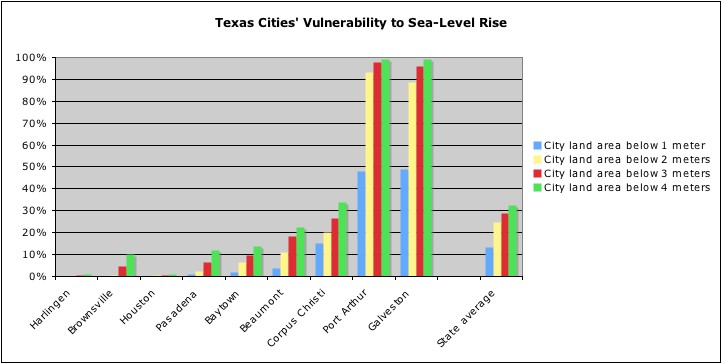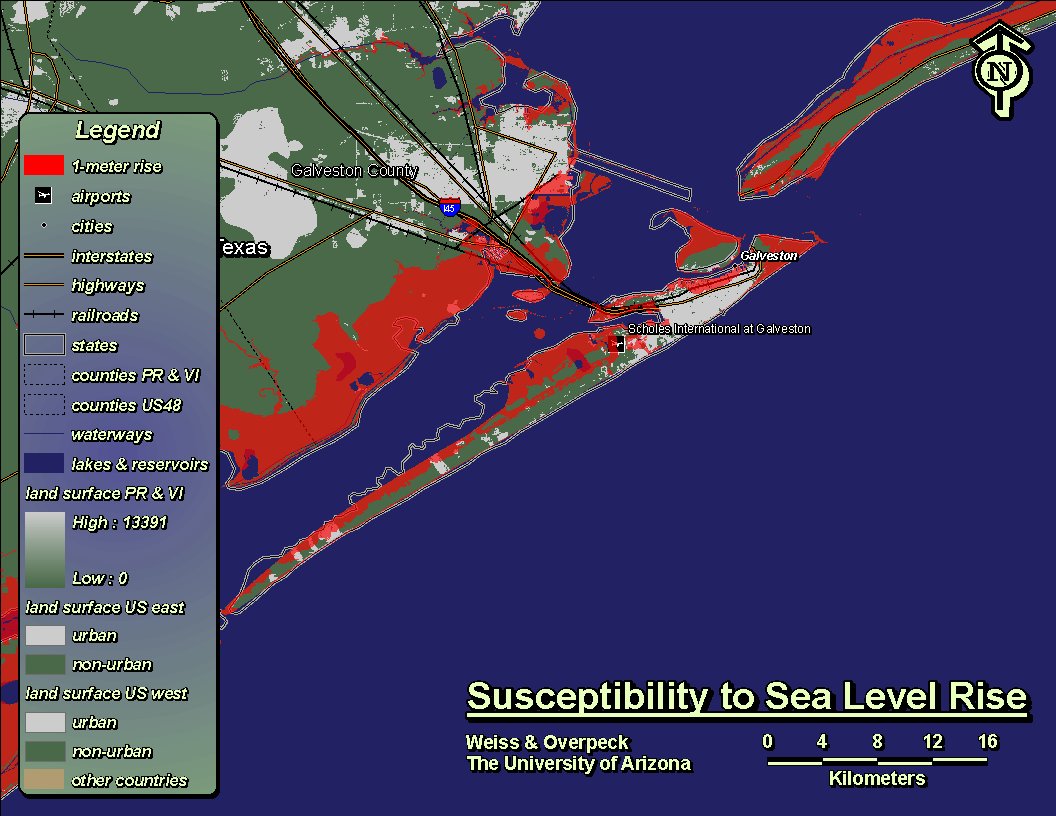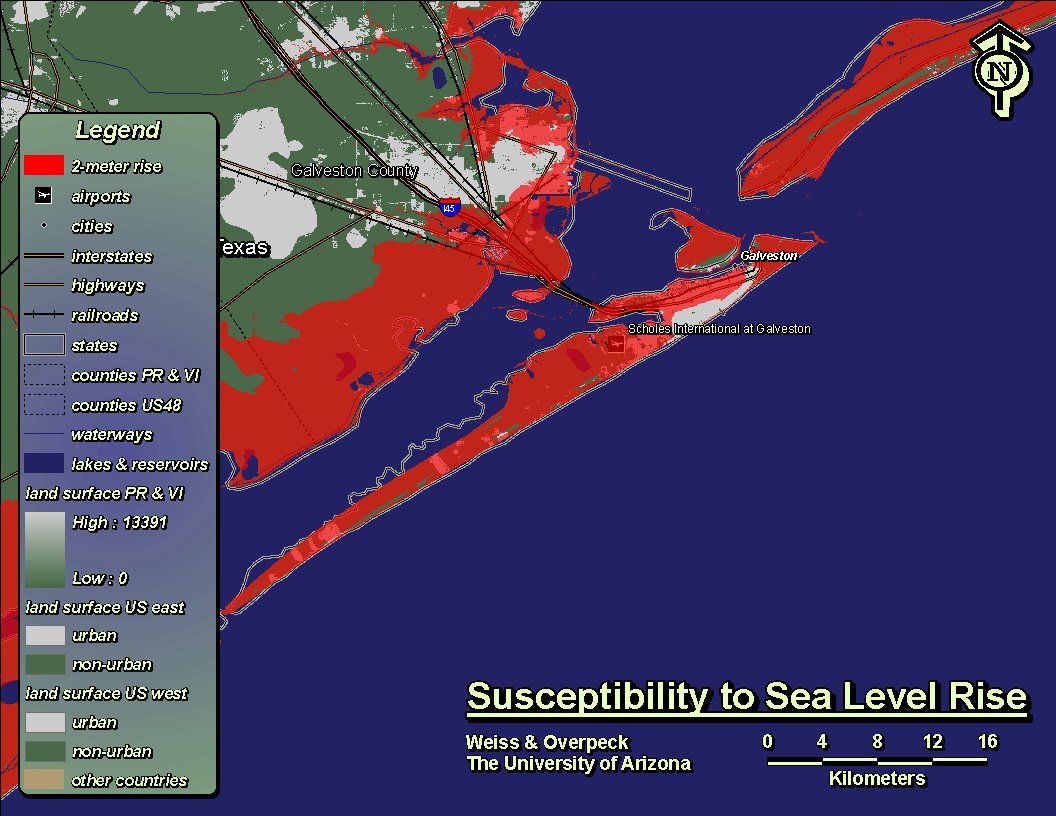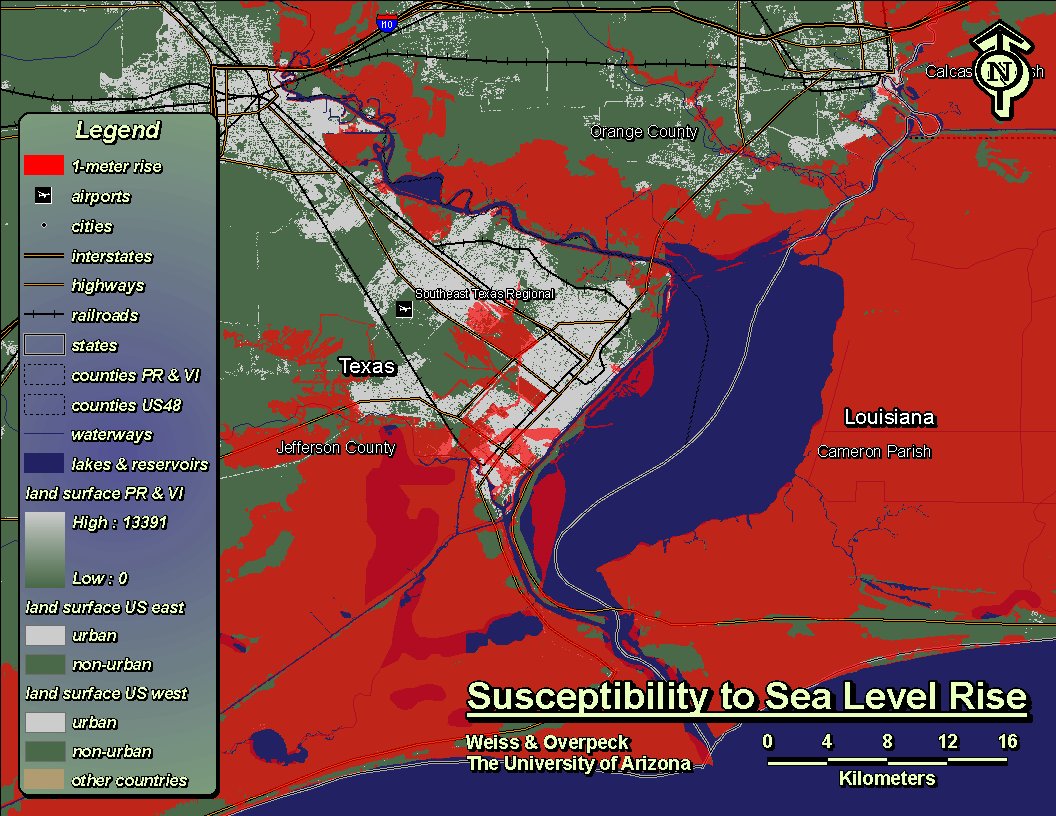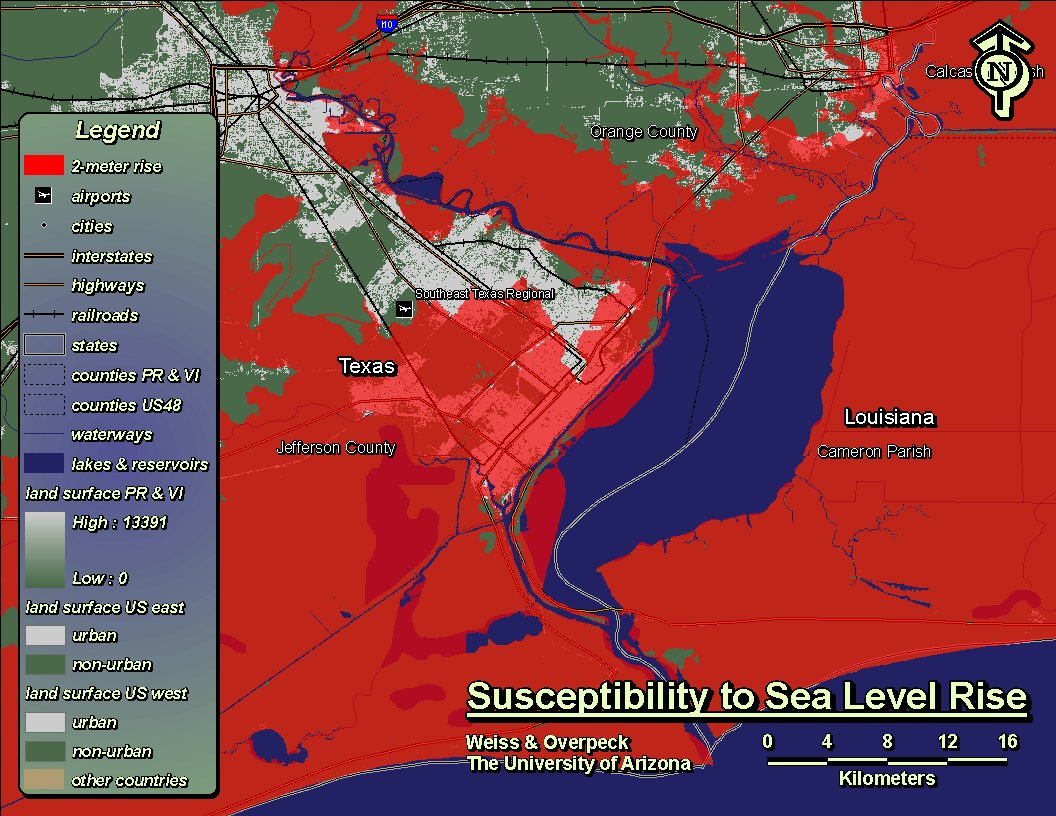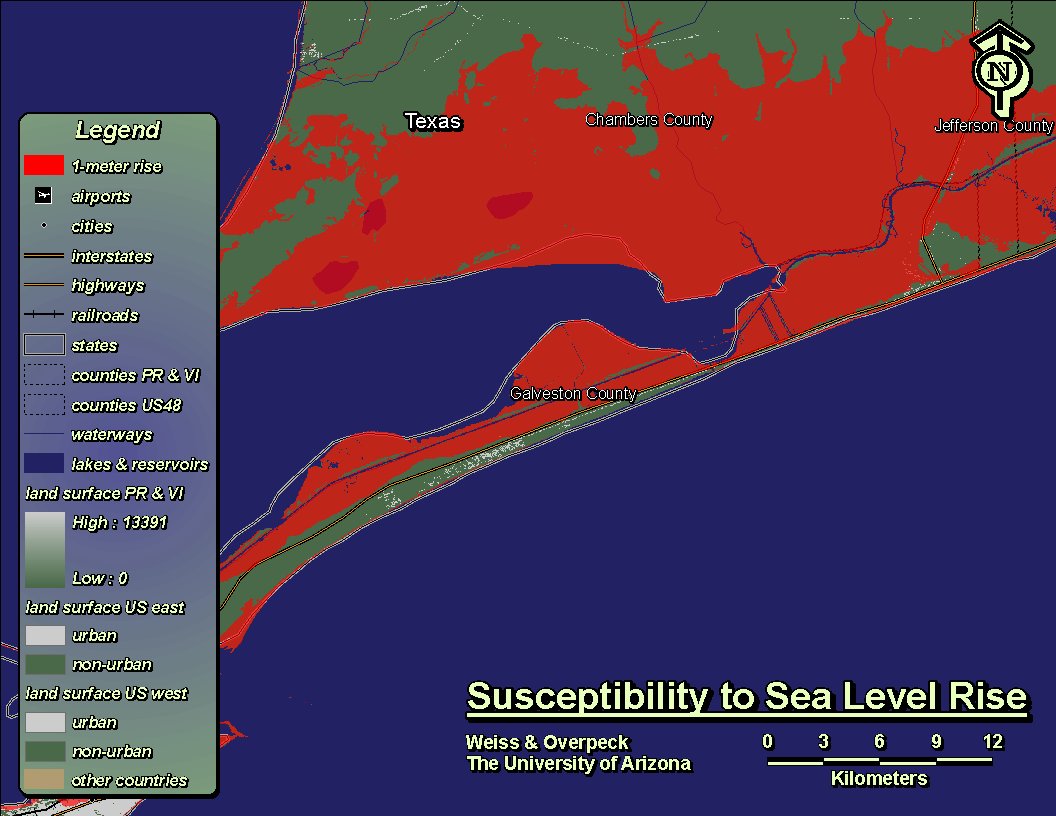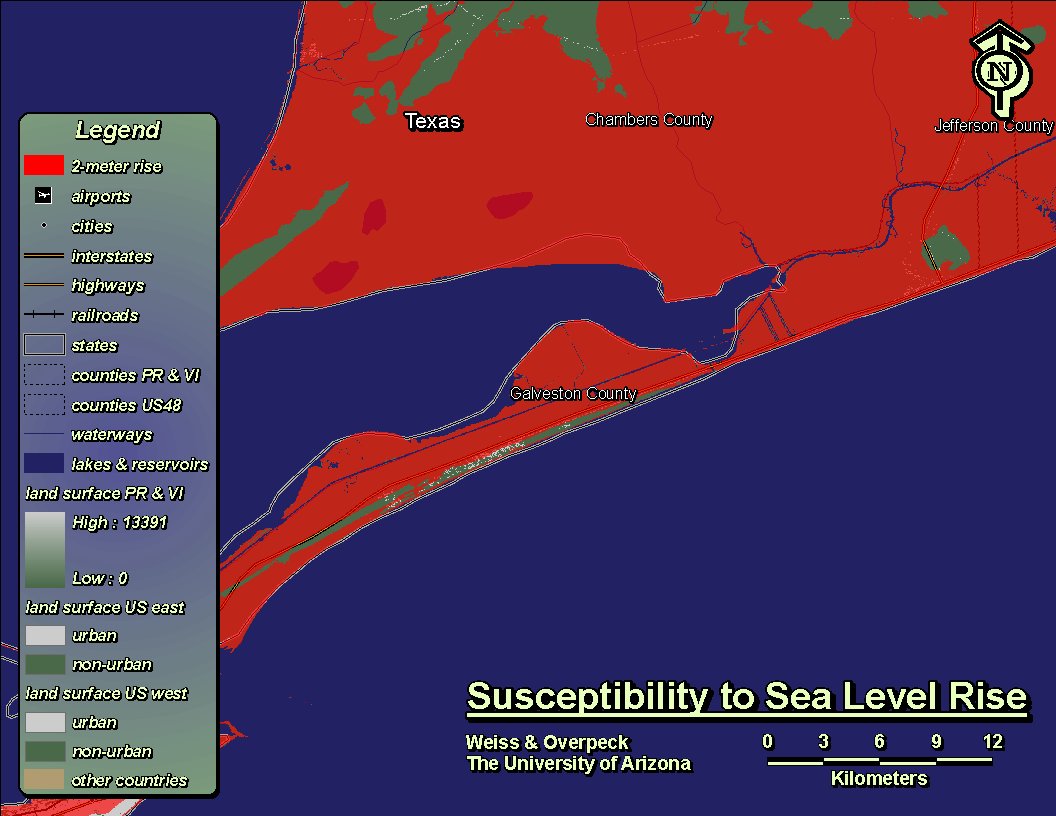Rising Seas Could Swamp Some Texas Cities By 2100
Meanwhile, Texas Republicans try to defund the EPA

While Republicans in Congress, led by members of the Texas GOP delegation, work to defund and defang the EPA, climate change – and the science of climate – marches on. The GOP’s willful suspension of trust in what ever-mounting evidence – and dare I say, common sense? – tells us is happening to the planet is not just short-sighted. It’s reckless.
Consider just one impact of climate change: sea-level rise. As the oceans heat up and ice sheets and glaciers melt, oceans are rising inexorably, putting in peril millions of people living in coastal communities across the planet – Texas included.
If anything, scientists are revising upwards their estimates of sea-level rise. Whereas the 2007 assessment of the Intergovernmental Panel on Climate Change estimated between .18 and .59 meters (7 inches to 2 feet) of sea-level rise by 2100, recently published studies are now predicting 1 meter, or about three feet. That’s largely due to new research into the dynamics of ice-sheet flow, which was excluded from the IPCC report.
Last week, a team led by two scientists at the University of Arizona published research that for the first time looked at how rising seas are likely to impact every major coastal city (above 50,000 in population) in the lower 48 states. The headline from the report is that almost 10 percent of the land within 180 U.S. coastal cities could be swamped by century’s end. But that’s an average across the 48 states. Drill down a bit and the results are even more sobering for Texans.
If the experts are right – and oceans do rise by 1 meter or more – some Texas cities could eventually be swamped by the Gulf. At greatest risk are Port Arthur, Galveston and Corpus Christi, according to the University of Arizona paper.
Almost 50 percent of Port Arthur and Galveston are less than 1 meter, or three feet, above sea level. Roughly 90 percent of those cities’ land area is below two meters, or six feet. Corpus Christi, the third most vulnerable Texas city, has about 15 percent of its area below 1 meter. While other Texas cities fare much better, they still contain non-trivial pieces of land at risk.
The authors of the paper have created an interactive map tool where you look at sea-level rise impacts to all U.S. coastlines.
Take a look at what just one meter would do to Galveston Island. (Click for a larger image.)
Here’s two meters:
How about Port Arthur at 1 meter?
And two meters:
Although Weiss and Overpeck didn’t look at Bolivar Peninsula (their study was limited to cities with 50,000+ people), Bolivar might be the most vulnerable part of Texas to sea-level rise. I just published a feature story on the painfully slow pace of hurricane recovery on Bolivar, so I am sensitive to the desires of the Hurricane Ike victims. Many want to return home to a place they know and love. My personal opinion is that the state and federal government ought to make good on their promises to rebuild homes on Bolivar.
However, it is also true that Bolivar is a less-than-ideal place for permanent human habitation. Most of the Peninsula is little more than a sandbar. High tides frequently inundate Highway 87, the only road that runs the length of the Peninsula. Beach erosion is extraordinarily high in places. Seventy-six tropical storms or hurricanes have come within 55 miles of Bolivar since 1871. So, it’s a geographically-troubled place in the best of times. And, based on the best estimates of what the future holds, parts of Bolivar will simply succumb to the Gulf this century.
I should point out that sea-level rise is not just some far-off hypothetical dreamed up on a wonk’s desktop. It’s happening right now and satellite measurements show that the rate has increased in recent decades, probably in response to global warming.
Many communities in the Texas Gulf Coast – Galveston Island, for example – are contending with subsidence from oil/gas extraction and groundwater pumping as well as beach erosion.
Here’s the tide gauge at Pier 21 in Galveston over the last century.

Global sea-level rise driven by greenhouse warming will only accelerate this dangerous trend.
So you’d think this might be an issue of paramount importance to Texas officials? No, quite the contrary. They’re too busy losing frivolous lawsuits, blocking any attempts to curb greenhouse gases, or mouthing third-rate pseudo-scientific nonsense, the kind which involves either a profound stupidity or just plain lying through one’s teeth.
One of the latest denialist trainwrecks goes something like this:
1) Plants need carbon dioxide;
2) Carbon dioxide is good;
3) You shouldn’t regulate something that is good.
Now, Buddy Garcia, a Perry-appointed TCEQ commissioner, tried the meme out in “Modern Stewardship,” his word-salad newsletter.
But it is not possible or practical for EPA to try and regulate carbon dioxide under [the Clean Air Act]. As we all learned in middle school, nearly every living creature on earth exhales carbon dioxide, and nearly every plant, as part of photosynthesis, takes in carbon dioxide and produces oxygen. In other words, carbon dioxide is naturally occurring and necessary for life on Earth.
I don’t know what exactly Buddy is trying to tell us but he seems to imply that the EPA is trying to take carbon dioxide away from plants. Or something. I don’t really know. But it’s fairly sad.
